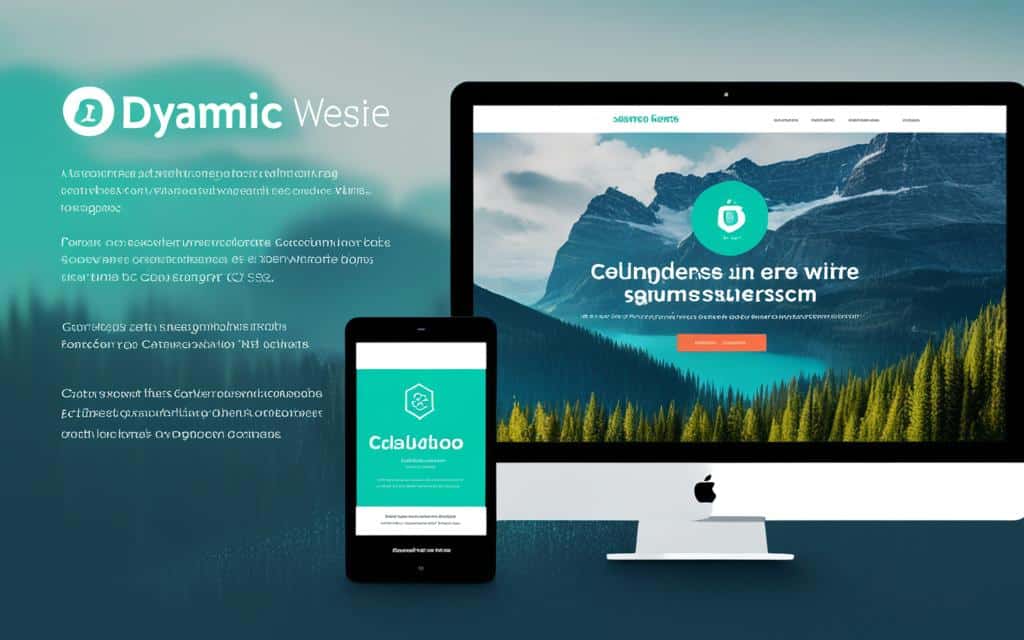Table of Contents
Customizing the style of your website is essential for creating a visually compelling and user-friendly online presence. In the world of web development, CSS (Cascading Style Sheets) plays a crucial role in controlling the design aspects of a website. By implementing advanced CSS techniques in CMS themes, you can take your website’s appearance to the next level.
CSS Techniques
CMS Themes
Whether you are using a Content Management System (CMS) module or a platform like HubSpot, understanding how to harness CSS to customize your themes is key to creating a standout website that resonates with your audience.
To implement advanced CSS techniques in CMS themes, you need to know how to add custom CSS files, style specific document type fields, and apply styles to field types across all document types. In this article, we will guide you through each step, empowering you to create unique and visually appealing CMS themes for your website.
Adding Custom CSS Files to the CMS Module
When customizing the style of your CMS themes, it’s important to add custom CSS files to the CMS module in your project. By doing so, you can achieve the desired visual effects and enhance the overall design of your website.
To begin, you’ll need to place your custom CSS files inside the folder cms/src/main/resources. If necessary, you can create subfolders within this directory to organize your CSS files effectively.
Once you’ve added the custom CSS files, it’s essential to rebuild and restart your project. This step ensures that the files are properly included in the cms.war file, making them accessible to your CMS themes.
To confirm the inclusion and accessibility of your custom CSS file, you can verify its functionality by visiting the specified URL. This allows you to ensure that your custom styling is being applied correctly.
Pro Tip: When adding custom CSS files, make sure to follow best practices for naming conventions and file organization. This will make it easier to manage and maintain your CSS files in the long run.
Custom CSS Files in the CMS Module:
| Folder Structure | Description |
|---|---|
| cms/src/main/resources | The main folder for storing custom CSS files in the CMS module. |
| Subfolders (optional) | Additional folders within the main resources folder to organize CSS files effectively. |
Remember, adding custom CSS files to the CMS module is a crucial step in creating unique and visually appealing CMS themes. By leveraging the power of custom styling, you can elevate your website design and provide an exceptional user experience.
Styling a Field in a Document Type
After adding the custom CSS file to the CMS module, you can begin styling a specific field in a document type. By defining a CSS class in your custom CSS file, you have the power to change the appearance of the field in the editing template.
To apply the defined class to the field, you need to configure the location of the custom CSS file on the editing template’s root component in the Hippo Console. This will ensure that the styling is correctly applied to the desired field.
“By customizing the CSS for each field in a document type, you can create a consistent and visually appealing design across your CMS themes. This level of customization allows you to tailor the look and feel of your website to meet your specific branding requirements.”
Once you have made the necessary changes in the Hippo Console, you can save them and open the document type in the CMS. From there, you can select the field you want to style and add the desired CSS class.
By following these steps, you can easily customize the appearance of individual fields in your document types, ensuring that your website’s design aligns with your branding and vision.
Example:
Let’s say you want to style the “title” field in your document type. You can define a CSS class in your custom CSS file, such as:
.title-field {
/* Add your styling properties here */
}
Then, in the Hippo Console, you would configure the location of the custom CSS file on the root component of the editing template. This would look something like:
After saving the changes and opening the document type in the CMS, you can select the “title” field and add the defined CSS class, like so:
| Field | Description |
|---|---|
| Title | The title field in the document type |
| CSS Class | The CSS class defined in the custom CSS file |
Styling a Field Type in all Document Types
If you want to apply a custom style to a specific field type in all document types, you can follow a similar process as styling a field in a document type. After adding the custom CSS file to the CMS module, define a CSS class for the field type in the custom CSS file. Then, configure the location of the CSS file on the field type’s root component in the Hippo Console. By setting the wicket.css property to the defined CSS class, the field type’s widget will have the desired style in all document types.
By styling a field type in all document types, you can ensure consistent visual presentation and branding across your CMS themes. This approach allows you to customize the appearance of specific field types, such as text fields, images, or checkboxes, without having to modify each document type individually. This saves time and effort while maintaining a cohesive design language throughout your website.
Here’s an example of how you can define a CSS class for a field type in a custom CSS file:
.custom-field-type {
/* CSS styles for the field type */
color: #333333;
border: 1px solid #999999;
/* And additional styles as needed */
}
Once you’ve defined the CSS class in your custom CSS file, you need to configure the location of the CSS file on the root component of the field type in the Hippo Console. This ensures that the styles defined in the CSS file are applied to all instances of the field type in document types.
Here’s an example of how you can configure the CSS file location in the Hippo Console:
<wicket: declare-marks>
<webfile>.+?
By setting the wicket.css property to the CSS class defined in the custom CSS file, the field type’s widget will inherit the desired style. This means that all instances of the field type, regardless of the document type, will have the same visual appearance.
Here’s an example of how you can set the wicket.css property in the Hippo Console:
<property name=”wicket.css” value=”custom-field-type” />
By following these steps, you can easily style a field type in all document types, allowing you to maintain consistency and branding throughout your CMS themes.
Attaching CSS Files in HubSpot for Design Changes
HubSpot provides a platform for creating, publishing, and attaching CSS files for design changes. With the HubSpot Design Tools, you can easily create a new CSS file and make edits using the code editor. This allows you to have full control over the presentation and style of your website.
Attaching CSS files to your content or template in HubSpot is a seamless process. By attaching the CSS file, you can instantly apply the desired design changes to your website.
The attached stylesheets in HubSpot are linked in a specific order to ensure proper rendering on your site. This systematic approach guarantees that your design changes are applied correctly and consistently across all pages.
In addition, HubSpot allows you to attach or remove stylesheets on a specific page or domain. This versatility enables you to tailor the design changes to specific sections of your website or different domains within your portfolio.
Design changes are an integral part of website customization. With HubSpot’s CSS file attachment feature, you can easily apply and manage style modifications, ensuring a visually appealing and unique website design.
Now, let’s take a look at an example in the form of a table to illustrate how CSS file attachment works in HubSpot:
| CSS File Name | Attachment Type | Page/Domain |
|---|---|---|
| custom-style.css | Global | All pages |
| homepage-style.css | Page-specific | Homepage |
| blog-page-style.css | Domain-specific | Blog domain |
In this example, the CSS files are attached with different attachment types. The “custom-style.css” file is attached globally, affecting all pages. The “homepage-style.css” file is attached specifically to the homepage, while the “blog-page-style.css” file is attached to the blog domain.
Summary
Attaching CSS files in HubSpot is a straightforward process that allows you to implement design changes effectively. Whether it’s applying edits globally, on specific pages, or for particular domains, HubSpot’s CSS file attachment feature empowers you to achieve the desired visual impact for your website.
Conclusion
Implementing advanced CSS techniques in CMS themes is a powerful way to customize the design and style of your website. By leveraging CSS, you can enhance the visual appeal and user experience of your CMS theme.
Adding custom CSS files allows you to introduce unique styling elements to different document types and fields, providing a personalized touch to your website. Styling individual fields and field types in document types enables you to tailor the appearance of specific content and create a cohesive design.
Whether you are utilizing a CMS module in your project or working with a platform like HubSpot, exploring advanced CSS techniques can unlock endless possibilities for your website design. By mastering these techniques, you can create sleek and modern CMS themes that captivate your audience and elevate your online presence.
FAQ
How can I add custom CSS files to the CMS module?
To add custom CSS files to the CMS module, you need to place the files inside the folder cms/src/main/resources. If necessary, you can create subfolders within this directory. After adding the custom CSS files, you must rebuild and restart your project to include the files in the cms.war file. Once done, you can verify the inclusion and accessibility of your custom CSS file at the specified URL.
How can I style a specific field in a document type?
To style a specific field in a document type, you can define a CSS class in your custom CSS file. This class will change the appearance of the field in the editing template. To apply the defined class to the field, you need to configure the location of the custom CSS file on the editing template’s root component in the Hippo Console. Once you save the changes, you can open the document type in the CMS and select the field to add the desired CSS class.
How can I style a field type in all document types?
To style a field type in all document types, you need to follow a similar process as styling a field in a document type. After adding the custom CSS file to the CMS module, you should define a CSS class for the field type in the custom CSS file. Then, configure the location of the CSS file on the field type’s root component in the Hippo Console. By setting the wicket.css property to the defined CSS class, the field type’s widget will have the desired style in all document types.
How can I attach CSS files in HubSpot for design changes?
In HubSpot Design Tools, you can create a new CSS file and make edits using the code editor. The CSS file can be attached to your content or template in HubSpot, allowing you to control the presentation and style of your website. The attached stylesheets in HubSpot are linked in a specific order to ensure proper rendering on your site. You can also attach or remove stylesheets on a specific page or domain in HubSpot.







